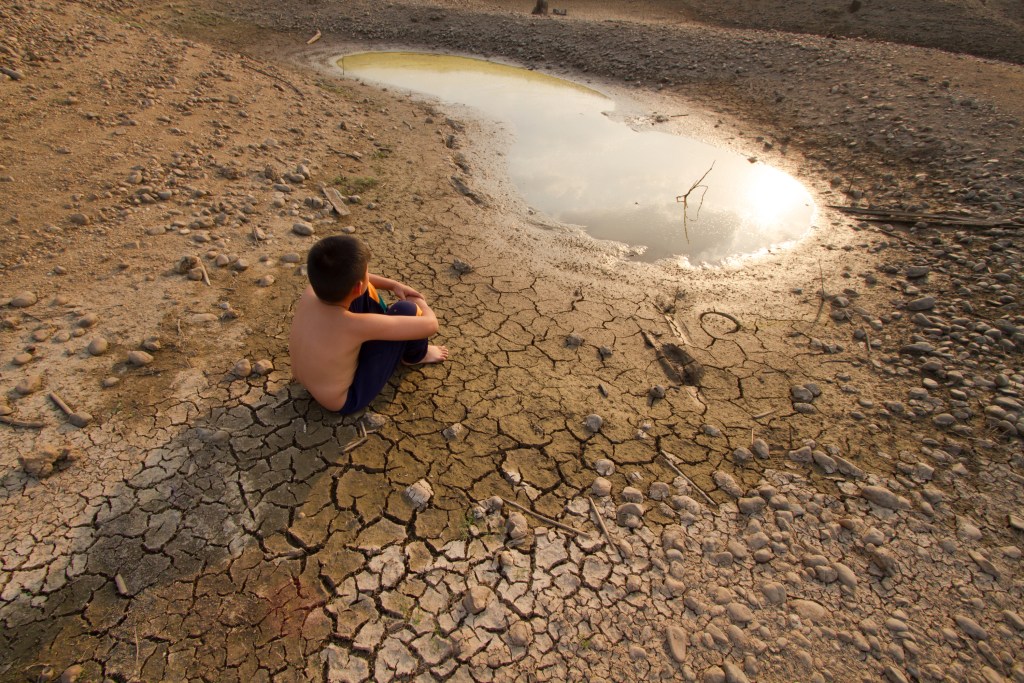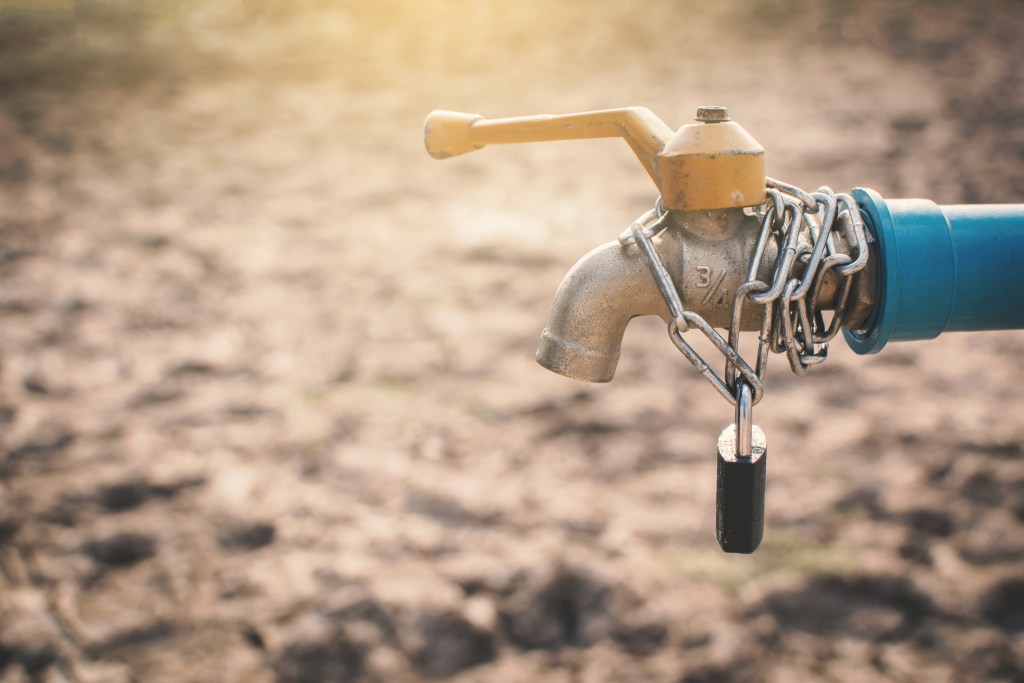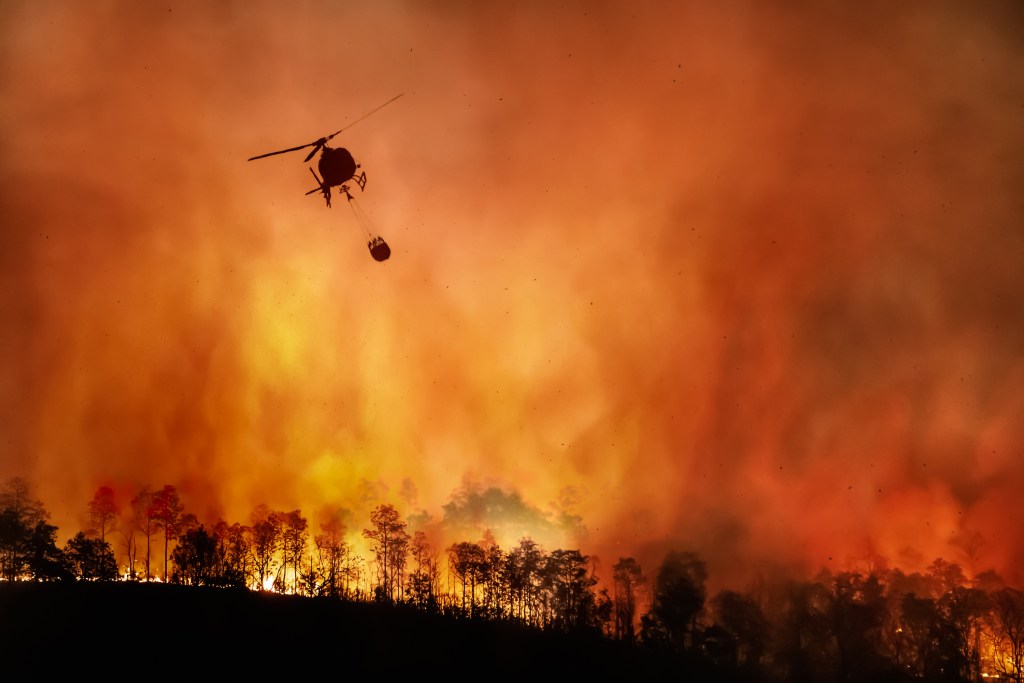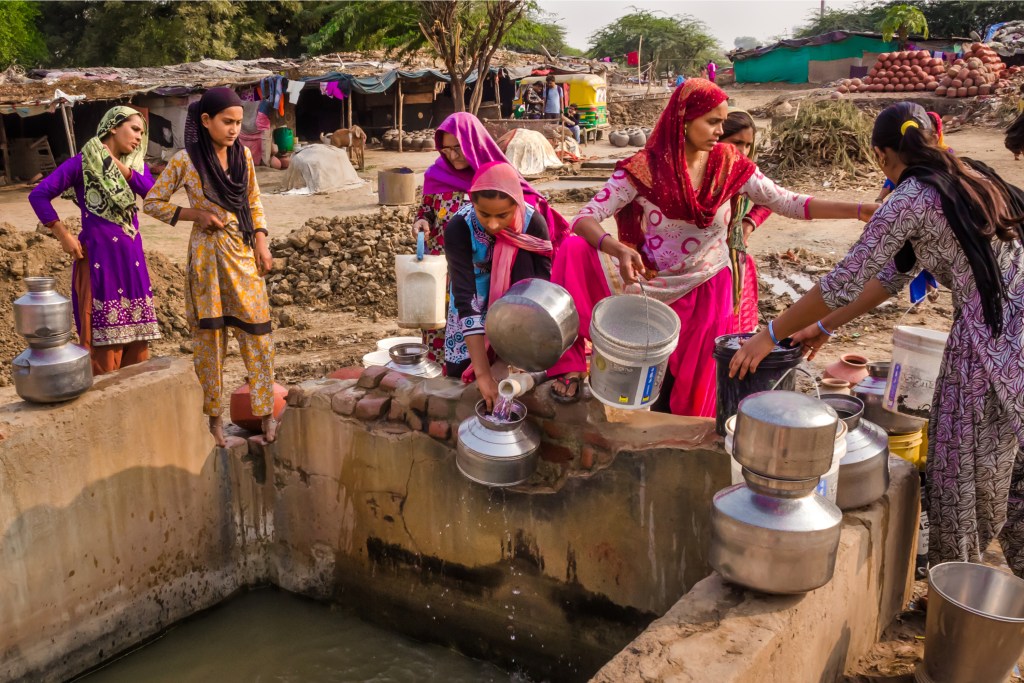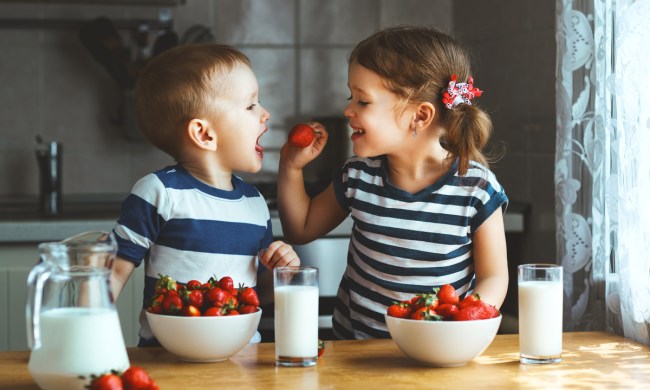Water is crucial to life on Earth, be it human, animal, or plant. When there is not enough water to meet demands, the resulting droughts can be devastating. Ripple effects of drought reach out across environmental, economic, and sociopolitical lines. And, although Mother Nature has a hand in how and when droughts occur, man-made climate change has created conditions that have led to worsening droughts. Experts are warning that if we don’t do something now, droughts are a “harbinger of things to come.”
What is a drought?
If you look “drought” up in the dictionary, it’s defined as “a period of dryness especially when prolonged.” But, defining “drought” really isn’t that simple.
“There are many definitions of drought that range from purely precipitation deficits, to a combination of hot temperatures and precipitation deficits, to a combination of those along with soil moisture deficits, to only soil moisture deficits and so on,” says Gerald Meehl, senior scientist for the National Center for Atmospheric Research in Boulder, Colo.
Droughts also fall into different types or categories such as “meteorological,” which occurs when an area experiences decreased precipitation, and “agricultural,” which happens when water supply doesn’t meet the needs of livestock and crops. According to Noah Diffenbaugh, a professor and senior fellow at Stanford University who studies the impacts of climate change, no matter the type of drought, all have one thing in common: water deficit.
“There are at least a dozen different definitions of drought,” says Diffenbaugh, who is also a scientist with the American Geophysical Union. “All have differing metrics but implicit in these definitions is water deficit. It’s actually an issue of supply and demand, and a difference in what’s available and what’s needed.”
Unlike many natural disasters, droughts typically don’t have a clear start and a clear end. Timescales can vary from sudden onset flash droughts that occur when precipitation stops and temperatures rise for a month or two, to seasonal droughts that might last a few seasons, to multi-year droughts, according to Meehl. “This is one of the challenges of studying drought and coming to grips with the impacts. There are so many definitions that zeroing in on one often leaves out impacts involved with other definitions,” he adds.
Droughts in historical context
Just like the definition, the conditions that lead to drought are not simple. Droughts are not new and have always occurred naturally within the climate system, according to Meehl. Major droughts have been tracked by scientists as far back in human history as Tropical Africa in 133,000 B.C., and Ancient Egypt in 2,200 B.C. More recently, the Dust Bowl drought brought severe damage to the Southern Plains in the 1930s.
“Drought in all its varieties has always existed in the climate system,” says Meehl. “We know this, for example, by looking at tree rings from very old trees in the western U.S. The causes of naturally occurring drought can be many and can depend on what definition you use.”
While droughts have always been around, drought conditions have worsened and expanded dramatically across vast regions of the U.S. in very recent times. Since Oct. 2020, almost all of the High Plains, the western U.S. and more than half of the southern U.S. have been experiencing some level of drought, according to the U.S. Drought Monitor. California experienced 376 weeks of drought from 2011 to 2019, and in 2021, the state, along with other parts of the Northwest, is experiencing expanding areas of moderate to exceptional drought.
Drought isn’t just impacting the U.S. Countries around the globe from Brazil to Madagascar are experiencing severe drought conditions, and drought is currently occurring on every continent except Antarctica.
The perfect storm leading to increasing droughts
Why is so much drought occurring? We can’t place all the blame on Mother Nature, because a lot of it falls on us. Climate change is a key factor in increasing droughts because it leads to increased temperatures and evaporation, reduced snowpack volumes, and altered circulation patterns that change the characteristics of storms — all conditions that make droughts more likely. The leading factor in worsening U.S. droughts is human carbon emissions which influence precipitation, temperature, and evaporation rates.
According to Diffenbaugh, low precipitation combined with high temperatures makes it more than twice as likely for drought to occur. “It’s very clear that the global temperature is increasing, and the biggest cause is human emission of greenhouse gases from fossil fuel use,” he adds.
And, while climate change isn’t directly causing drought, it’s leading to conditions that are exacerbating drought, says Meehl.
“Droughts are naturally occurring features of the climate system, but the problems for us arise when there is long-term drying over certain regions that is being driven by the increase of human-produced greenhouse gases from the burning of fossil fuels,” says Meehl. “We can track these effects using climate models where the only thing we change is greenhouse gases, and you see this drying over certain regions such as the western U.S. Therefore, there is a long-term increasing drying trend going on from increasing greenhouse gases, and when a naturally occurring drought occurs, you have a combination of factors that produces an even more severe event than would have naturally happened. So, climate change doesn’t cause drought, it makes naturally occurring droughts worse.
The far-reaching effects
To understand how devastating drought can be, one need look no further than the wildfires blazing through the western U.S., which have already burned an area larger than Rhode Island and Delaware combined, and sent smoky haze all the way to the eastern U.S.
“In the case of the western U.S., there is a long-term drying due to climate change and this contributes to long-term drying of vegetation,” says Meehl. “Then when a naturally occurring, multi-year drought occurs, the vegetation dries even more. Add to that heat extremes that often occur when conditions are right for drought, and then that combination of factors really adds to the wildfire risk.”
Multi-year droughts can literally add fuel to the fires, explains Meehl. “Another aspect of a multi-year drought is that you can have the occasional wet year interspersed with a series of dry years. Then, during the wet year, there is a burst of growth of vegetation that, when it dries out the next year, adds even more potential fuel sources for wildfires,” he says.
The ecological damage of drought goes far beyond wildfires. “Ecosystems are severely impacted,” says Diffenbaugh. “More than 100 million trees died in the last California drought. Species that live in streams are also severely impacted.”
Droughts also have a huge economic toll. In the U.S. droughts cause an average of $9.6 billion in damage and loss per event, making them the second most costly natural disaster behind hurricanes. Droughts can affect commerce due to lowering water levels along rivers and ports where goods are transported and lead to a strain on electrical power grids.
“In the (U.S.) west now, reservoirs are at record low levels,” says Diffenbaugh. “The water deficits impact hydroelectric generation, and greenhouse gas emissions rise as a result.”
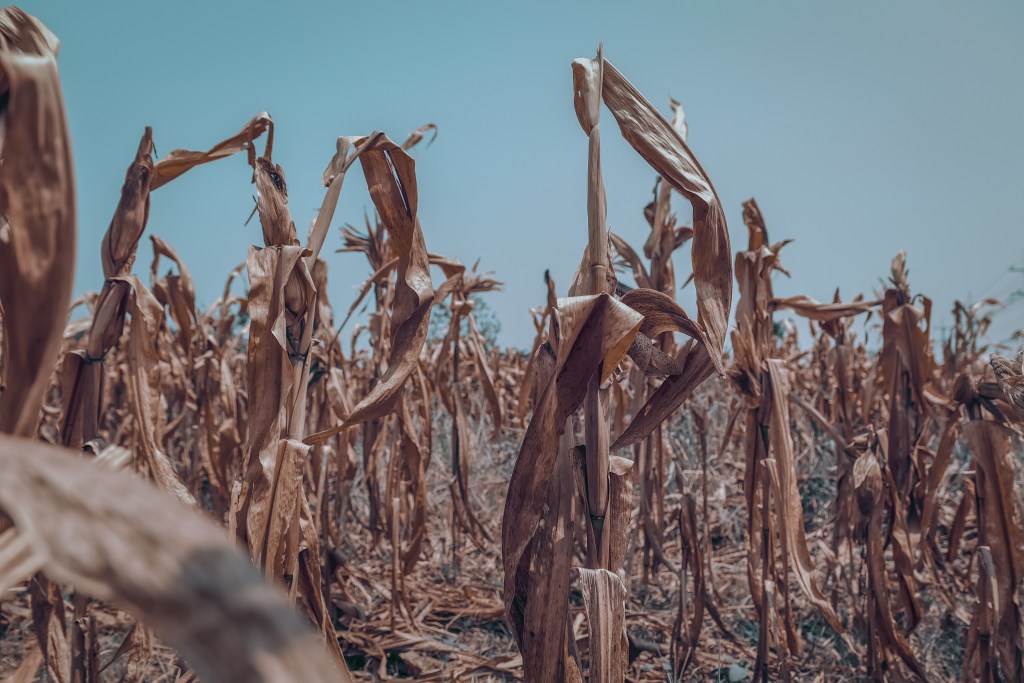
Agriculture is particularly hard hit during droughts. In 2012, droughts were responsible for an estimated $17 billion in lost crops in the U.S., and in 2014, it was estimated that the California drought was responsible for $1 billion in losses for farmers. It’s estimated that more than 80% of drought-induced economic loss in developing nations from 2005 to 2015 was related to crops, livestock, and fisheries.
There are also the societal impacts of drought, which disproportionately affect developing nations. “Water deficits combined with hot weather impact agricultural yields which also has implications for food insecurity,” says Diffenbaugh.
In addition to exacerbating the effects of lack of clean water and food in developing nations, research has found that drought can contribute to sustaining conflict, especially for agriculturally dependent groups and politically excluded groups. Droughts also have an impact on public health. For example, smoke from wildfires can have severe impacts on the health of those who suffer from respiratory conditions, especially if they don’t have access to health care.
“A lot about life on Earth depends on water,” says Diffenbaugh. “Water deficits have a broad impact and an unequal impact. Marginalized communities are disproportionately affected.”
Why we need to take action sooner rather than later
It’s clear if we don’t take drastic measures to reduce climate change, drought and other extreme weather events such as floods and heatwaves will only worsen. That means it’s not simply a matter of adapting to where we are now, says Diffenbaugh.
“We are not adapted to climate change,” he says. “There will be increasing frequency and severity of extreme events if we stay along the current trajectory. There will be more greenhouse gas emissions which will lead to more global warming which will lead to more of the conditions we are already impacted by.”
The “clear way forward,” according to Meehl, is for countries to come together through agreements to reduce greenhouse gas emissions such as the Paris Accord. Cities’ water management systems will also have to come to terms with water supply limits in drought-prone areas, he adds.
“There just won’t be as much water to fuel explosive residential growth in arid areas that are already prone to drought and will continue to become even more so going forward,” says Meehl. “Where I live in Colorado, water managers do not know the meaning of the words ‘limited water supply’ because their job is to fulfill demands from development for ever-increasing amounts of water. This is not a sustainable business model. These are difficult decisions to come to grips with, but society must accept how the climate system is changing and adapt to those changing conditions, and this may mean accepting limits to growth in water-sparse regions.”
Changes in land management practices can help address wildfire risk associated with drought, because the rapid building of homes in forest ecosystems puts lives and property at risk, according to Meehl. “And adaptation has to be part of this exercise because even if greenhouse gas emissions are reduced, there will be a time lag before we start seeing the benefits.,” he adds.
If you want to learn more about what you can do as an individual, Diffenbaugh recommends visiting Project Drawdown, an organization with a mission to help the world reach “drawdown,” which is “the point in the future when levels of greenhouse gases in the atmosphere stop climbing and start to steadily decline, thereby stopping catastrophic climate change.” You can also visit Carbon Offsets to Reduce Poverty’s list of 25+ Ways to Reduce Your Carbon Emissions or the David Suzuki Foundation for tips on cutting back on the main sources of carbon emissions.
